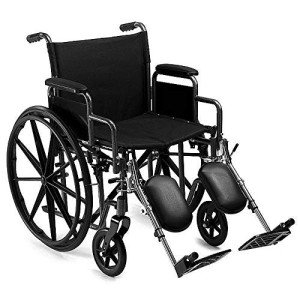Unexpected Business Strategies That Helped Bariatric Wheelchair 24 Inch Seat To Succeed

Bariatric Wheelchair Seat Width
Seat Width
Having the correct seat width is very important to wheelchair users who spend longer periods in their chairs. Too narrow a seat will trigger pressure on the hips and thighs which might result in sores or pressure points. Having too wide a seat can likewise make it hard for the user to reach the hand rims to move themselves or maneuver in little spaces.
To measure the right seat width an individual would rest on a chair generally and have their measurement taken across their lap at the best point which is typically their hips. A wheelchair measuring tape can be used to measure this, however a backyard stick is preferred as it prevents individuals from covering the tape around their hips which would give an unreliable result.
The basic wheelchair seat width is 16" (narrow grownup), 18" (standard adult), and 20" (broad adult). For bariatric clients, a 24" seat is offered. This durable additional wide bariatric wheelchair from Medline features swing-away footrests, a carbon steel frame with rust- and chip-resistant chrome plating, and easy-to-clean vinyl upholstery. It has a weight capacity of 500 pounds.
Seat Depth
Traditionally, the seat depth of a bariatric wheelchair was included 2" to the measurement taken at the user's best point (usually their hips). This was suggested to accommodate additional layers of clothing that may be worn throughout winter. However, this practice is becoming less common as wheelchair users are able to invest more time inside your home and are not using long coats. This makes the seat depth of a chair less crucial when selecting a bariatric wheelchair. However, it is still important to select an option that uses appropriate support for larger users.
The Medline folding extra wide bariatric manual wheelchair features a comfy 24" seat width and a durable slide tube silver vein frame. It likewise has an adjustable axle and tool-free raising legrests.
Seat Height
When it comes to figuring out the correct wheelchair seat width you need to always measure from the user's best point which is usually their hips. You will also need to consider whether the user is going to be wearing a winter season coat as this might add 2" to the width needed.
When a wheelchair remains in usage it need to only be operated on level surface areas with the wheel locks totally engaged. This is to prevent the chair from being able to move inclines that are 10 degrees or greater. It is also crucial to keep in mind that any activity that might move the center of gravity in the chair need to be done with care. This consists of grabbing products that require the individual to lean out of their seat or trying to stand up from it.
Whenever you have the chair in usage it is advised that you routinely check it for damage and lube any locations that are considered needed. For instance, the casters ought to be lubed by eliminating the caster fork and utilizing a multi-purpose grease to apply to the caster stem bearings. Likewise, the foot plates can be changed by loosening up the bolt and after that moving them to the desired position. This permits the feet to sit easily on the footplate and prevents any pressure points from forming. This can be very uneasy for the user and if left unattended, can lead to press sores.
Weight Capacity
Bariatric wheelchairs are developed to support more weight than standard wheelchairs. lightweight bariatric wheelchair makes them tougher and better equipped to handle falls. They are likewise normally bigger and larger, making them less maneuverable in tight spaces than basic wheelchairs. They need automobiles with unique ramps and lifts to pack them, along with drivers who know how to finest transport them from one area to the next.
When picking a wheelchair, consider its weight capacity as it will be the primary determining consider whether it will accommodate your traveler's needs. The weight capacity of the chair is often noted as a fixed load, suggesting that it suggests the amount of weight the chair can conveniently hold while stalling. However, some manufacturers also list an active load that is based on a drop test and can mimic the effect of someone sitting down in the chair. This might be a more reputable measurement of the weight limit, depending on your needs.

If you plan to perform activities that shift your center of gravity in the seat (such as grabbing things), make certain to have front casters pointed in a forward instructions and wheel locks engaged so the chair will not topple. Likewise, check that casters are lubricated regularly to avoid extreme wear and abrasions. The lubrication procedure includes eliminating the fork, separating the caster from the wheel, and greasing the caster stem bearings with high-quality multi-purpose grease.
